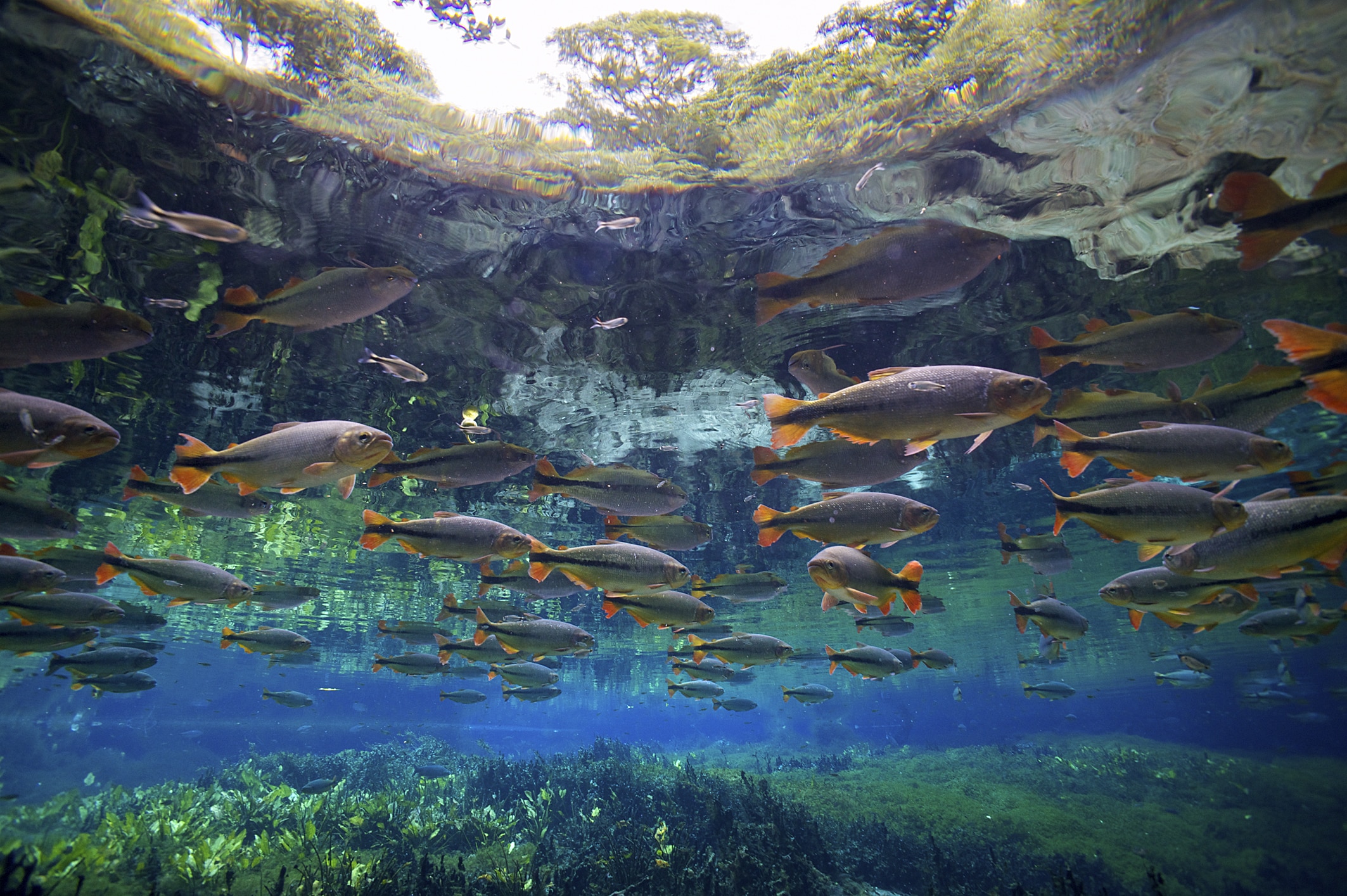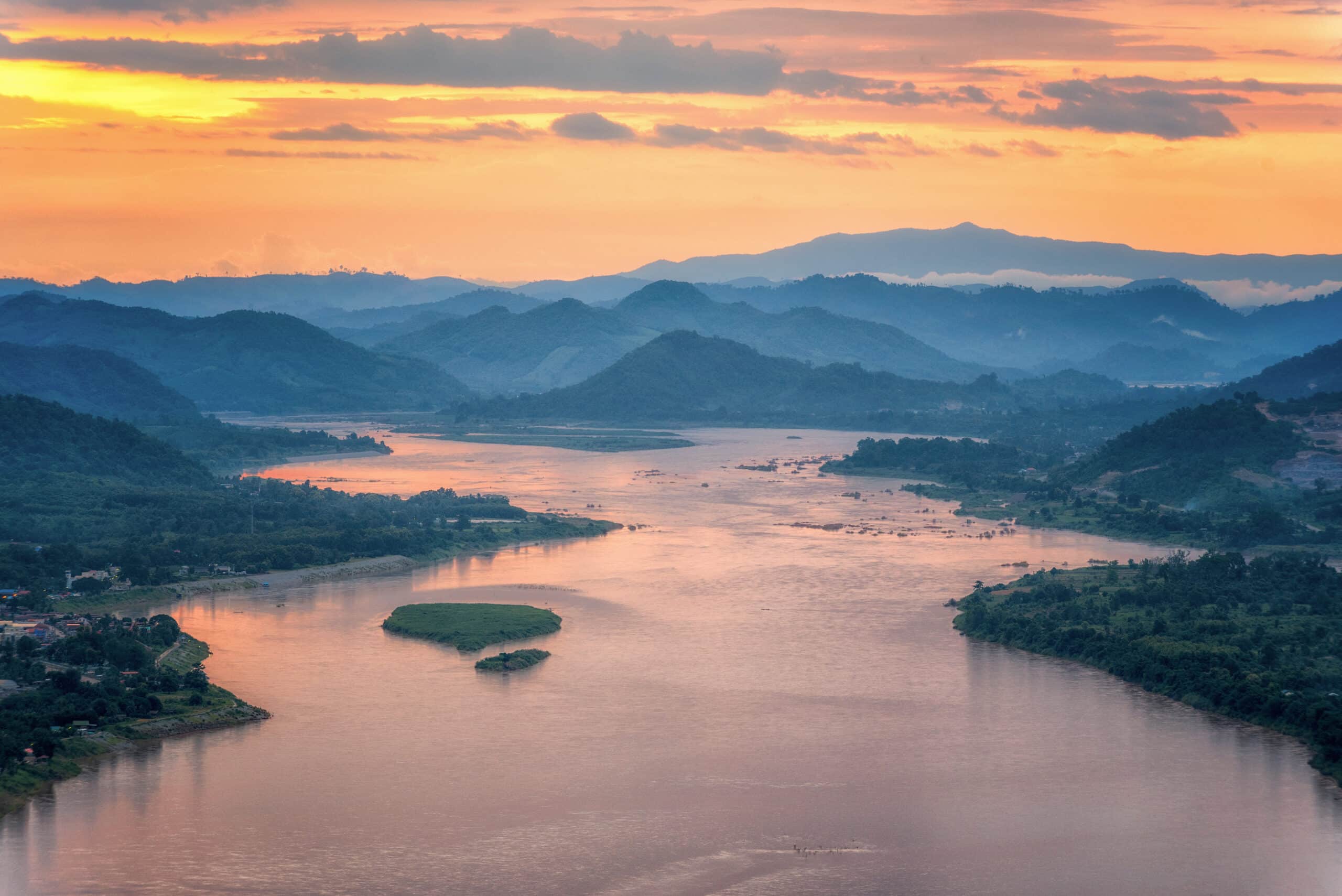On the heels of the news that 25% of freshwater fish are at risk of extinction, a team of ichthyologists in Türkiye has rediscovered hope in the shape of a carp-like, spotted fish: the leopard barbel (Luciobarbus subquincunciatus).
The species – one of SHOAL and Re:wild’s Most Wanted – was last scientifically documented in 2011. That is until last November, when Dr Cüneyt Kaya and Dr Münevver Oral’s team found the fish in the Turkish section of the Tigris River.
We got the chance to catch up with Kaya and Oral about the amazing rediscovery – including the dramatic night the fish was found – and their next challenge.
SHOAL: Congratulations on the rediscovery, how do you feel now that the news is out and what has the response been like?
DR MÜNEVVER ORAL (MO): We’re really excited. In fact, the right word would be we are thrilled, because the leopard barbel is the second species that we found from SHOAL and Re:wild’s 10 Most Wanted Lost Fishes list. As far as we are aware, no other country has found any species and Türkiye has a 100% success rate – so in this sense we are super happy and proud.
SHOAL: Going back to the beginning, when did you start looking for the leopard barbel and how did you approach the search?
MO: We started the search operation in late October. We spent more than a week trying to bring everyone together and talking with the local authorities. Where the species distributes is almost at the border of Syria and Türkiye, and the Syrian border is where you need to be careful in terms of security.
There are also a lot of dams built on the Tigris river so we needed to come up with a strategy. The Ilısu Dam was built in 2018 and is the second biggest in Türkiye in terms of water collection capacity. We did extended and comprehensive expeditions across the surrounding cities – including Batman, Hasankeyf, Şırnak, Mardin, Siirt (Botan) – and checked pretty much every single river collection point to the Tigris river.
The leopard barbel is the second species on SHOAL and Re:wild’s Most Wanted Lost Fishes list to be rediscovered, having found the Batman River loach in Southeastern Türkiye in late 2021. The leopard barbel, a difficult second album, required an adjustment in strategy.
MO: The Batman River loach prefers much shallower rivers so it was easier to go into the river and find the species, it was mostly on us, but the leopard barbel prefers deeper water so we needed fishermen with hands-on experience.
It was a lot of work but I’m so glad that it could pay off eventually.
SHOAL: The moment the fish was found sounds very dramatic, what happened?
MO: On the 12 November we finished the third expedition which had taken more than a week in Şırnak, Cizre. Cüneyt went to an IUCN meeting in Antalya (southern Türkiye), and I came back to my faculty where we are based. Then after 3 days, on 15th November at 10.30 pm, we received this facetime call from our fisherman [Mehmet Ülkü].You should have seen our faces. I was like “What’s happening at this hour? Why is he calling me on facetime?” and he was like “I have a surprise!”.
The minute I received the news I started driving in less than 30 minutes. Cüneyt was in Antalya, the southern part of Türkiye.
DR CÜNEYT KAYA (CK): Quite far away.
MO: And if you were driving how long would that take, maybe 16 hours?
CK: No, more than that. It’s really far.
MO: So he got on the first direct flight from Antalya to Van (nearest direct flight) and drove another 6 hours to finally reach Cizre.
CK: When we got there it was almost sunset.
MO: What was thrilling was whilst we were on our way Mehmet called me again and showed me this wonderful looking, much younger smaller one. A second specimen of the leopard barbel.
CK: Amazing.
MO: That can only be described as a miracle, I don’t have any other words.
CK: On the plane I saw these photos and was like “what’s happening?”!
MO: It was quite an unforgettable experience for both of us.
SHOAL: It’s such a dramatic tale! What did it feel like when you finally saw the fish with your own eyes?
MO: Well the second fish, the young one, is quite good looking. The same thing applies to every human being and animal – as we get older we tend to get a little uglier. But the younger fish was amazing, you could see the spots easily.
CK: It was yellow-ish – like a golden-yellow – so very healthy
MO: Yeah, super handsome! One of the established ichthyologists, Dr.Jörg Freyhof saw the photos and was like “Oh my god, that’s one of the best photos ever taken of the leopard barbel”, so we were very happy.

The stunning pictures of the two specimens taken by photojournalist Metin Yoksu showcase the leopard barbel in all its spotted glory. Once done marvelling at how handsome the fish was, Kaya and Oral admit to being surprised by the fish’s quiet nature.
MO: Wild species are normally super fast and they really don’t like seeing people, but this fish – both of them – wouldn’t get scared. I think it’s in their biology that they don’t. Maybe it’s because of their predator behaviour? They tend to hunt as opposed to being hunted. They were super handsome and they were quiet.
SHOAL: Handsome and brooding, that’s so interesting.

SHOAL: Did you feel that with the rediscovery of the Batman River loach a few years ago, you felt quite confident going into the search for the leopard barbel?
CK: Yes.
MO: We were quite confident because we kept receiving anonymous calls from the locals.
CK: In the same genus there are many species, so they’d confuse them – but sometimes the calls were correct.
MO: And it’s not only the leopard barbel on our target list, there are other species. Cüneyt is the field man, he goes at least 10 or 20 times in the year…
CK: …more…
MO: …to this and other parts of Türkiye and we always observe the habitat. We had positive signs to make us think that the leopard barbel was still alive, but we wouldn’t have any proof until the night that we found the species.
SHOAL: What are your hopes for the leopard barbel both on a local level and an international level?
MO: The biggest motivation for us is to make sure that we do everything to protect the leopard barbel. That’s why we say Cizre, but we don’t pinpoint exactly where we found the species to make sure the people won’t go and hunt for it. It’s somewhere along a 40km radius, so good luck with that!
We will be going back to Şırnak to bring all the fishermen together to help them learn what to do and what not to do. There’s some fishing gear which is forbidden which causes a lot of issues for the whole aquatic ecosystem – fish, mammals, crustaceans, everything, these are called ghost fishing. It’s easily solved, during the expedition we gave instructions to local authorities and they took super fast actions. Our fisherman [Mehmet Ülkü] will be the bridge between us, academia, and local fishermen. We are so happy to have him in our team.
Also we will be in touch with the national education department to give some seminars to teachers so they can discuss the issues and understand how to protect our biodiversity for future generations.
Every second day we speak with our fisherman [Mehmet Ülkü], and an engineer from the local fisheries and agriculture department was a graduate from our department, Rıdvan Hüsem, so they’re taking us really seriously. Hopefully we as a large team will be able to carry out as many awareness activities as possible.
From his immense knowledge of the local waterways to catching the specimen itself – not to mention keeping it happy and safe as Kaya and Oral raced across the country! – the two are very emphatic that Ülkü’s contribution was vital to the successful rediscovery.
MO: He’s the star, not us. If he didn’t trust and collaborate with us, we wouldn’t be able to achieve what we achieved. His expertise helped us a lot. He is very excited and he’s already a star in Cizre when we found the species and where he’s from.

SHOAL: On an international level, Türkiye is the only country to have a 100% hit rate for rediscovering the 10 Most Wanted Lost Fishes.
MO: Yeah! Where is the award? I want to meet Leonardo Di Caprio in person! He used to be my crush in high school, so I don’t know maybe a date or a dinner?
SHOAL: Oh definitely! Why do you think it’s so important to rediscover lost species?
MO: In the ecosystem, everything is connected. It can be finding a new species or it can be rediscovering a species, it’s always important.
If you don’t know what you have at a country level or international level, you don’t know what to protect.
SHOAL: And in the communities and organisations you’ve worked with, it must be really exciting and motivating.
MO: Oh my god you know everyone is calling, everyone is clapping. Obviously Leonardo has helped us a lot, and I’m so happy, but this is already important as it is. We know that the biodiversity crisis is increasing with global warming, so we really do need to take care of our biodiversity as much as possible.
SHOAL: So what is next for you both, do you have another ambitious project on the horizon?
MO: That question I ask to SHOAL and Re:wild. Hey guys, do you think you will be challenging us to find another lost species perhaps?
There are already so many species that we are looking forward to finding. There are already so many species that we want to figure out their phylogenetic relationships. We’re up for any challenges! If you want to update the list feel free, we’re so up for new challenges.



)
)
)

